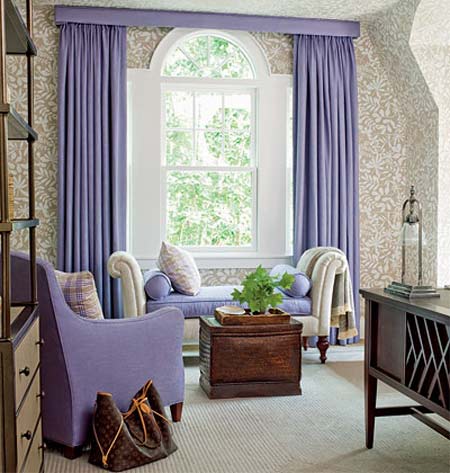Curtains and problem windows
Curtains can compensate for architectural shortcomings, such as low ceilings or little detail; windows that are too low, too high, too wide, or too small; and windows that don't match, aren't positioned symmetrically, or are stuck in a corner.
Many designers prefer to hang curtains as high as possible - usually just below the cornice or crown molding - to make ceilings feel taller and elongate the profile of the window. But in some cases, with high ceilings or low windows, that can be too high. Curtains should generally be floor-length unless they're casual curtains in a kitchen or café curtains. Most designers prefer curtains to just touch the floor, with a small, perhaps 5cm, break.
Fullness depends somewhat on the fabric and the style of pleats. The rule of thumb for most fabrics is that the finished curtains measure two-and-a-half times the width of the window, but for sheers and silk, designers often prefer three times for fullness. Box pleats generally require fabric three times the length of the curtain rod for the correct fullness, while a flatter style of panel, such as a scalloped top or grommeted panel may need only one-and-a-half times the curtain rod length.
Designers often put as much thought and custom detail into the hardware as they do the curtain panels themselves. Rods and rings should be in proportion to the size of the room and windows and match the style of decor in the room. In a generous room, that might mean a 8cm-diameter rod.
Curtains for low ceilings
Many homes have low ceilings and the trick is to hang draperies from the ceiling or just below the
cornice or crown molding. This serves to lift the eye and make a small space or low ceiling appear larger.
Curtains for high ceilings
In a room where the ceiling or windows feel too high you could consider curtains with horizontal strips or pattern to widen the room and visually lower the height of a ceiling or windows.
coastal living magazine


